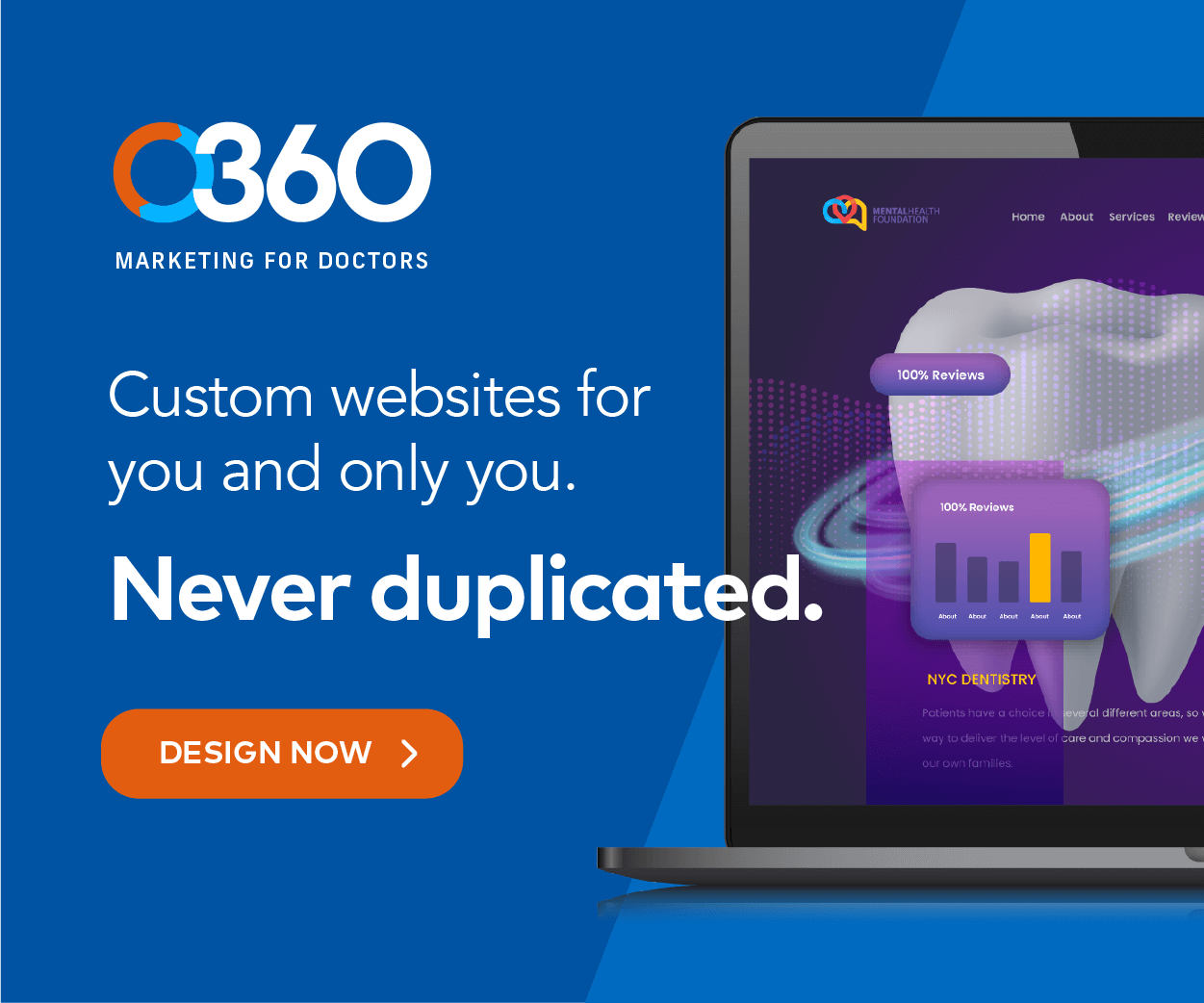
In healthcare, medical practice’s branding strategies make an important difference, and when it comes to branding, it’s about creating a lasting image in the minds of your patients. Marketing strategies can reinforce and build your brand and help build loyalty among your current patients. While many practices have a wide selection of strategies and concepts to choose from when marketing their practice, one of the best, most found ways to build your practice is through a long-term approach. If you’re a new practice trying to establish itself or a long-standing one trying to attract new patients, it’s important to seek out marketing plans that work and will help you last.
The Fundamentals of Building Branding Strategies in Healthcare
Effective branding strategies can always help attract new patients and build trust among your current ones. Having a strong brand can make a large difference in the success of your medical practice, and it starts by taking what you know about yourself, your business, and your goals and incorporating it into your marketing strategies as we advance. When it comes to developing a brand name that you can build branding strategies on, some ideas can include:
- Building Consistency: To build a cohesive brand identity, focus on consistency. Your logo, colors, and fonts should match across all platforms, from your website to your office decor and even the uniforms your staff wears. This uniformity helps reinforce your presence in the minds of your patients, making your practice the first one they think of when healthcare needs arise.
- Knowing Your Values: Identifying and communicating your core values in your branding strategies is crucial. These values should be evident in every aspect of your practice, from the way your receptionist greets patients to the follow-up care instructions you provide. Patients who see your actions align with your advertised values develop a deeper trust in your services.
- Using Your Websites as A Brand: Your website is your first place to interact with potential patients. It’s considered one of your most powerful branding tools out there. An effective website is not just about aesthetics; it must also be functional, easy to navigate, and informative, as it is essentially your portfolio for your practice, medical services, and qualifications.
- Connecting Through Social Media: Social media is invaluable for connecting with people. Because each platform serves its purpose, providing regular posts that reflect your brand values can help engage current and potential patients.
- Develop Engagement Strategies: Regular newsletters, educational workshops, and a responsive online presence allow continuous communication with your patient base. These initiatives keep patients connected to your practice and can increase their loyalty and trust.
- Ensure Quality and Trust: As part of your branding strategies, phone calls, appointments, and follow-ups are an opportunity to solidify your reputation for quality and care. This extends to every part of the patient experience, from the ease of scheduling appointments to the comfort of the waiting room.
Proven Medical Marketing Strategies That Are Long-Lasting

Healthcare is an ever-evolving field, so staying relevant means updating and adapting to how you market your practice. However, some time-tested marketing strategies provide continuous, successful results, even as new healthcare developments change. Here’s a comprehensive list of some simple yet effective marketing ideas and branding strategies that you can use to build your brand further:
1. Educational Content Creation
Creating valuable, informative content that educates patients about health conditions, treatments, and preventative care is a cornerstone of medical marketing. This content informs patients and significantly boosts your website’s SEO, increasing visibility and attracting new patients. Implementing a regular publishing schedule can keep the content fresh and ensure that your practice remains a go-to resource for health information.
- Blog posts on the latest research or health tips
- Videos that demonstrate procedures or offer medical advice
- eBooks or guides on specific health conditions
Educational content helps establish your practice as a thought leader and improves SEO, drawing more traffic to your website.
2. Patient Testimonials and Case Studies
Sharing stories of patient successes is a powerful tool for any medical practice. To maximize the impact of these testimonials, it’s crucial to feature a variety of patient experiences and include diverse demographic backgrounds in these studies. Additionally, incorporating multimedia elements like video testimonials can capture more attention and emotion, making the stories more engaging and persuasive.
- Obtain consent from patients to share their stories
- Highlight diverse cases to appeal to a broader audience
- Use multimedia, such as video testimonials, to make a stronger impact
3. Referral Programs
Effective referral programs offer benefits to the referrer and the referee, such as discounts on services or special health-related products. To improve the referral process, provide patients with easy-to-use tools and reminders through your website or during appointments to reinforce your brand’s image and awareness.
- Offer referral incentives, such as discounts on future visits or health products.
- Make it easy for patients to share their experiences online, particularly on social media.
- Acknowledge and thank patients for referrals to reinforce positive relationships.
4. Community Involvement and Local Partnerships
Participating actively in community events and forming partnerships with other local businesses can raise your practice’s profile and dedication to your community’s health. This also includes collaborating with local gyms, wellness centers, or even local schools to offer health education sessions or services:
- Sponsor or participate in local health fairs or charity events
- Partner with local gyms, spas, or wellness centers to offer joint promotions
- Conduct free workshops or seminars on important health topics
5. Search Engine Optimization (SEO)
Optimizing your website for search engines must ensure potential patients find your services by identifying the keywords your target patients are searching for and incorporating these into high-quality, engaging content on your site. By doing so, you can ensure that your website is fast, mobile-friendly, and reputable:
- Research and utilize relevant keywords throughout your website content
- Optimize website speed and mobile responsiveness
- Build quality backlinks by collaborating with reputable sites in the healthcare industry
6. Email Marketing
Regular communication through email newsletters helps keep your practice relevant for your patients, providing them with timely updates, news, and health tips. These newsletters can also remind patients of your practice’s commitment to their health and prompt them to book follow-up visits or check out new services.:
- Send monthly or quarterly newsletters featuring health tips, news, and practice updates
- Segment your email list to tailor messages to specific patient groups, such as seniors or expectant mothers
- Include clear calls to action, like booking appointments or contacting your office for more information
7. Social Media Engagement
Maintaining an active presence on social media platforms can help you connect with patients more informally and frequently, as they are excellent tools for providing valuable health information and building relationships with your community:
- Post regularly with a mix of content types, from educational posts to behind-the-scenes glimpses of your practice
- Engage with users who comment on your posts to foster a community feel
- Use targeted ads to reach specific demographics or promote particular services
8. Professional Networking and Outreach
Networking with other medical professionals can boost your practice’s visibility and credibility. Establishing relationships with doctors, specialists, and other providers can also expand your patient base and provide collaborative opportunities.
- Host or attend regular networking events to meet other professionals in the healthcare industry.
- Join professional associations that align with your practice’s specialties.
- Engage in community outreach programs that allow your practice to give back to the community and build positive public relations.
9. Use Patient Management Software
One marketing technique often used is patient management software, which can provide detailed insights into your patient’s behaviors, preferences, and health trends. This data can tailor your marketing messages, optimize appointment scheduling, and improve patient follow-ups, enhancing patient satisfaction and retention.
- Implement software solutions that integrate seamlessly with your existing systems.
- Analyze patient data to identify trends and areas for marketing focus.
- Personalize patient communications based on collected data to make interactions more relevant and engaging.
10. Work Towards Sustainability and Advocacy
If your goals align with sustainability and health advocacy, this facet of your values can help enhance your brand and appeal to a wider audience. Promoting your practice as sustainable can help you connect with other providers and find support for local health initiatives.
- Advertise your practice’s green initiatives, such as using sustainable materials or implementing energy-efficient practices.
- Partner with local environmental groups to sponsor or participate in community clean-up days or other eco-friendly activities.
- Educate patients on public health issues through your platforms, showing your commitment to individual health and community well-being.
Connect with Optimized360 For Effective Branding and Marketing
Effective marketing for your medical practice means taking everything your practice is, including your goals, services, and community, and using your values to strengthen your brand. By using these methods, you can work to support your practice’s growth, experiment with different branding strategies, and help maintain the communities you work hard to engage with. At Optimized360, our SEO and marketing experts team can help you focus more on your patients. If you need help with branding, a website update, or want to start a social media marketing campaign, reach out to Optimized360 today.














